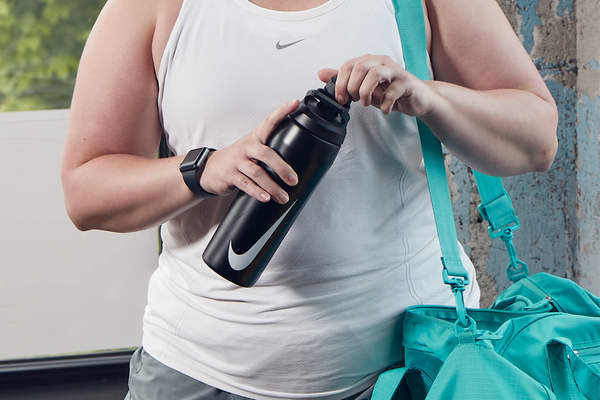How to Find the Right Skipping Rope Length for You
Buying Guide
Adding skipping rope exercises into a workout programme can mix things up and add more cardio into the routine. Here's how to make sure your skipping rope is best suited to you.

Skipping is a prime cardio exercise, meaning it gets the heart rate up. Skipping can help inject versatility into your routine—wherever you are. Given how portable skipping ropes are, you can pack them for a holiday or into your gym bag. But how can you tell if your skipping rope is the best size for your height? Find out this and more below.
How to Find the Right Skipping Rope Length
As a general guideline for skipping beginners, opt for a rope that's around one metre taller than you. To figure that out, you can simply add the extra length to your height. Or, if you're curious whether a current rope is a match, follow these steps to find out:
- Step on the middle of the skipping rope with your feet together.
- Pull the rope up towards your shoulders until it's taut.
- The end of the cable (not including the handles) should reach your sternum or armpits.
If the skipping rope is longer than chest height, it's probably too big and could potentially slow you down or make it more difficult to find the right jumping cadence. If the end of the rope falls below your armpits, the rope probably won't hit the ground when you jump, which means it's too short. Either scenario will create a more challenging—and potentially clumsier—skipping experience, especially for beginners.
As you practise and improve your skipping technique, you may eventually want to switch to a shorter rope, which will rotate more quickly for faster jumps. A shorter rope allows for more compact positioning, which may help reduce fatigue in the larger muscle groups and, over time, produce a faster cycle rate.
Tip: when skipping, remember to position the hands in front of the hips, rather than holding them out wide to the sides of your body. Proper technique will help ensure the rope hits the ground when and where you want it to, so you can get into a rhythm.
RELATED: Finding a Good Shoe for Skipping
How to Select Skipping Rope Styles and Materials
- Adjustable Length Skipping Ropes: some skipping ropes come with cables that are separate from the handles. These require cutting and customising of the cables to a certain length before fastening the handles. Other options are adjusted more seamlessly with a built-in function that adjusts the length in seconds.
- Weighted Skipping Ropes: some skipping ropes are weighted, meaning they have extra weight in the handles to help strengthen the arms and shoulders while jumping. A lighter weighted rope (for example, a skipping rope with a 225g (approx.) weight in each handle) will add resistance and move more slowly than a basic rope, which can help beginners slow down to practise cadence and form.
- Thickness: in general, choose a thinner cable if you're looking to maximise speed in your jumps. If speed isn't your goal, a thicker cable offers more durability.
- Terrain: for skipping outside on the concrete, a plastic rope won't last very long. Look for one that is made with a steel cable wrapped in vinyl, which is more likely to withstand tougher surfaces.
Frequently Asked Questions
Why Does Skipping Rope Length Matter?
A rope that's too long will take more time to rotate, limiting your speed, while a rope that's too short may not touch the ground, making it more likely for a jumper to trip or stumble.
How Long Should a Skipping Rope Be?
As a general guideline for beginners, opt for a rope that's around one metre taller than you. More experienced jumpers may want to use a shorter skipping rope, which will rotate more quickly for faster jumps.




